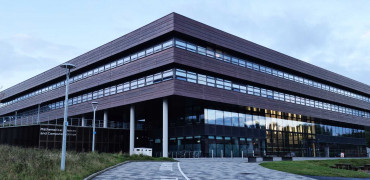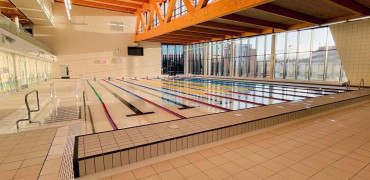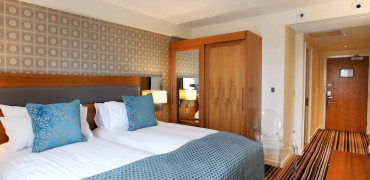As editor of a construction-focused magazine and website, I’m always getting stories of innovative projects and buildings but when news of the UK’s first all-electric building came through to me, it was the key element of how collaborative an approach it had been that caught my eye.
The first all-electric building for the University of Salford is now open to students, following this landmark cross-industry collaboration between the University, Morgan Sindall Construction, Arup, A&B Engineering and Mitsubishi Electric.
The stunning four storey, 15,550 square metre Science, Environment and Engineering Building, which welcomed students working in physics, electronics and other sciences from the start of this academic year, is benefitting from Mitsubishi Electric’s energy-efficient heating and cooling systems.
The innovative design allows re-uses ‘waste’ heat to ‘heat’ the plant room to boost overall efficiency
Net Zero goal
This development forms part of the Salford Crescent and University District’s masterplan, which includes finding opportunities to develop one million square feet of educational floorspace.
It is also supporting the University to meet the goal of net zero emissions by 2038, while offering students, academics and industry partners a space to work together on cutting-edge projects.
To align with the University’s sustainable ambitions, the new building – which is made up of laboratories, lecture theatres, offices and even a wind tunnel and gantry crane – needed to be designed with efficiency in mind at every stage.
From deciding to create the building’s frame with steel rather than concrete, installing roof-mounted solar panels, and fitting Mitsubishi Electric air source heat pumps and chiller to heat and cool the spaces, the environmental impact has been minimised.
Energy goals and optimum temperatures
Rebecca Bennett, Assistant Director of Sustainability at the University of Salford, said “The university has really ambitious sustainability targets, which are in line with the Greater Manchester goals. This new building is part of a much bigger plan to achieve net-zero, and we’re thrilled that the collaboration between the industry has delivered a space for our students which will be 100 percent electrically powered”.
The energy-efficient solutions chosen for the building were four Mitsubishi Electric air source heat pumps and a chiller.
Working with Arup from the early design stage, Mitsubishi Electric and Morgan Sindall determined which equipment would best meet the university’s energy goals – as well as maintaining the optimum temperature for students to work – between 20°C and 23.8°C during the winter and 22.8°C and 26°C during the summer.
They opted for four AW-HT-LN-CA 0604 air source heat pumps, to provide a much more energy-efficient heating option than gas heating, and a small i-BX chilller for process cooling.
Re-using heat
Mitsubishi Electric also worked with the design consultancy Arups and with M&E Contractor A&B Engineering to develop a system that would prove as energy efficient as possible.
The innovative design allows the university to re-use ‘waste’ heat that would have been expelled to the outdoor air to ‘heat’ the plant room, where the heat pumps have been installed, to boost the overall efficiency of the system.
Artificially increasing the temperature of the plant room around the heat pumps adds to the overall efficiency of the system.
Chris Newman, Zero Carbon Design Manager at Mitsubishi Electric, added: “This project has been a real partnership across the industry – which is why it’s been so successful.
“By working closely with the supply chain and the University from the early design development stage, it was possible for us to advise on the very best heating and cooling solutions.
“As a result, sustainability has been at the heart of the project from the start. The end result is a truly innovative space for students which has a minimal impact on the planet.”
Carole Titmuss is editor and publisher of Refurb Projects




